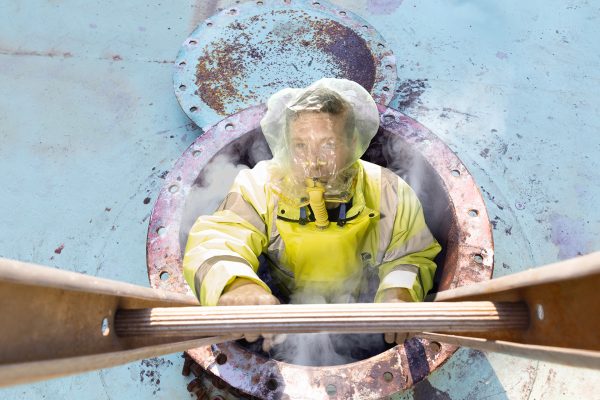Blog Post
Step-by-step Guide on How to Use EEBD
Posted By: February 23 2024

Introduction to EEBD and Steps to Use it: Breathe Easy in the Face of Danger
The vast expanse of the ocean, while breathtaking in its beauty, also holds an inherent element of risk. For those who navigate its depths, preparation for the unexpected is paramount. One crucial tool in this preparedness arsenal is the Emergency Escape Breathing Device (EEBD).
This life-saving equipment provides precious minutes of breathable air in the event of an onboard emergency, offering a lifeline in the face of danger.
But knowing you have an EEBD isn't enough – mastering its use is key to maximizing its effectiveness. This step-by-step guide breaks down the process of how to use EEBD in a clear, concise manner, empowering you to react swiftly and decisively in an emergency.
How to Use EEBD?
Remember, time is of the essence in emergency situations. Practice this procedure regularly to ensure smooth execution when adrenaline surges.
Step 1: Don the EEBD:
Locate your assigned EEBD and check the pressure gauge to confirm functionality.
Position the neck collar around your neck and secure the closure.
Place the hood over your head, ensuring a snug fit around your face and neck.
Tighten the drawstring around the hood opening for a complete seal.
Step 2: Activate the Breathing System:
Locate the activation lever or pull cord (varies by model).
Pull firmly on the lever or cord to initiate air flow.
You will hear a hiss as compressed air fills the hood.
Take slow, deep breaths through the mouthpiece.
Step 3: Escape the Vessel:
Move calmly and deliberately towards the designated escape route.
Maintain eye contact with the exit and avoid obstacles.
Do not remove the EEBD until you reach fresh air.
Step 4: Signal for Help:
Once in safe air, remove the EEBD.
Use visual distress signals like flares or smoke grenades to alert rescue teams.
Activate your emergency beacon or communicate with rescue authorities if possible.
Additional Tips:
Familiarize yourself with the specific model of EEBD onboard your vessel.
Practice donning and activating the EEBD in calm conditions to build muscle memory.
Ensure proper maintenance and storage of the EEBD as per manufacturer instructions.
Benefits of Knowing How to Use EEBD
Mastering how to use EEBD offers numerous advantages:
Increased Survival Time: By providing breathable air, the EEBD allows you to escape to safety and await rescue, significantly increasing your chances of survival.
Calm and Focused Action: Knowing how to operate the EEBD reduces panic and allows you to act rationally and efficiently in a stressful situation.
Enhanced Confidence: Familiarization with the EEBD boosts confidence and preparedness, empowering you to face emergencies with greater composure.
Compliance with Regulations: Understanding how to use EEBD ensures compliance with maritime regulations, avoiding potential legal repercussions.
Conclusion: Be Prepared, Breathe Easy
Having an EEBD onboard is essential, but knowing how to use EEBD is the key that unlocks its life-saving potential. By investing time in practicing and understanding its operation, you equip yourself with a vital tool that can make all the difference in an emergency.
MarineTech Safety & Shipping Corporation understands the importance of preparedness. We offer a wide range of high-quality EEBDs from leading manufacturers, ensuring you have access to the best possible protection.
Our team can also provide training sessions on how to use EEBD, empowering your crew with the knowledge and skills they need to handle emergencies with confidence.
Visit MarineTech today at https://marinetechss.com/supplies/life-saving-equipments and explore our extensive selection of EEBDs and other essential safety equipment.
Choose to be prepared, choose MarineTech, and breathe easy knowing you've taken the necessary steps to ensure the safety of your crew and passengers on every voyage.